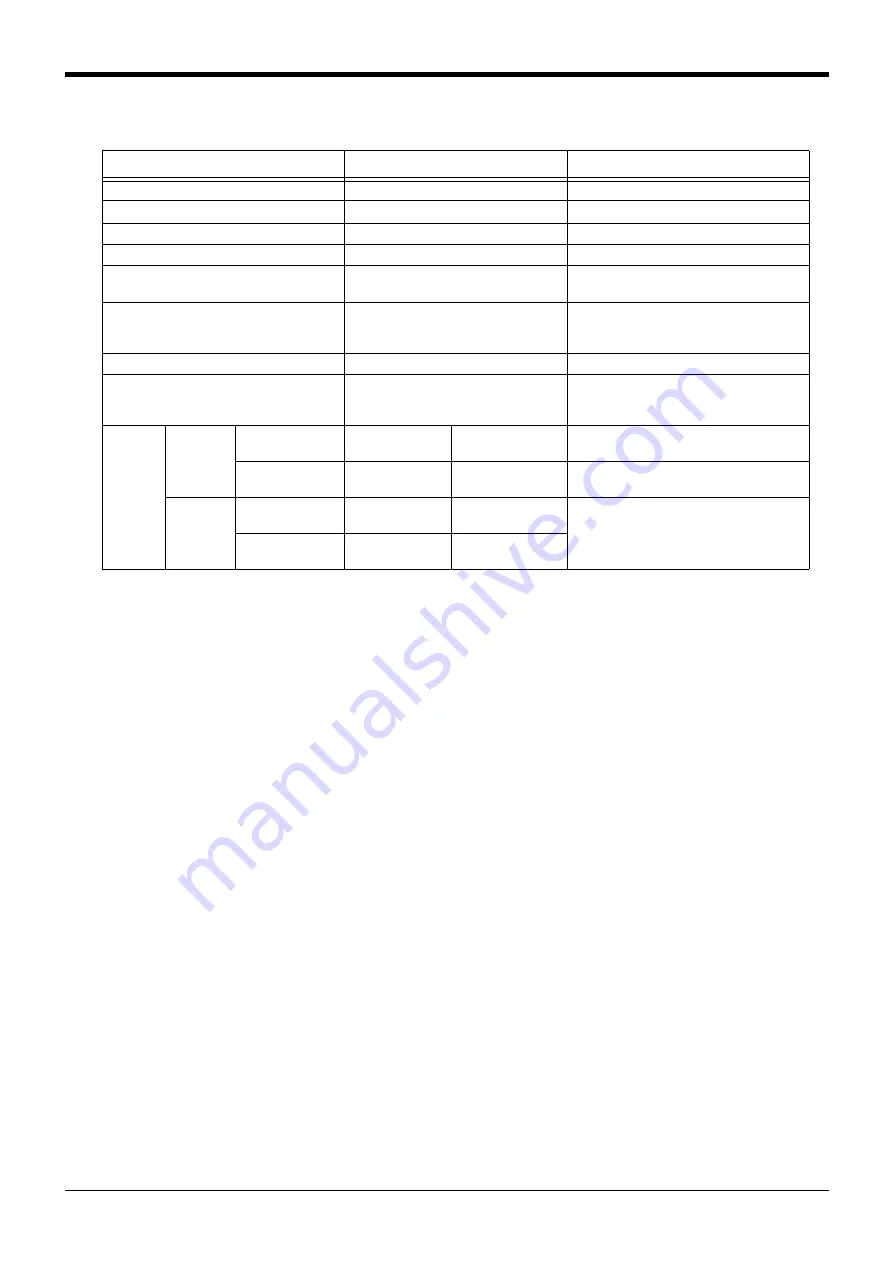
3Controller
Options 3-87
■ Specifications
Table 3-31 : Specifications
■ Functions
(1) Communication function
・ The number of usable points is 126 points maximum for bit control and 16 points maximum for word control.
・ Up to 2,048 points of input bit data can be monitored by a unit being connected. (Input only, output is disabled.)
・ Up to 256 points of input word data can be monitored by a unit being connected. (Input only, output is disabled.)
(2) Easy setup
・ The CC-Link interface card can be set by a rotary switch or DIP switch.
・No separate space is required to mount the CC-Link interface card as it is embedded in the robot controller (can
only be mounted into slot 2).
・ Easy wiring since only four terminals need to be connected.
・ Dedicated commands have been added to MELFA-BASIC IV (robot programming language); thus, no complex
interface programming is required.
(3) High-speed response
・The link scan time when connecting 64 stations is approximately 7.2 ms, achieving superior high-speed response
performance.
・ A transmission speed can be selected from 10M, 5M, 2.5M, 625K and 156K bps according to the transmission
distance.
Item
Specifications
Remarks
Communication function
Bit data and word data can be transmitted. Word data are used by the registers.
Station type
Intelligent device station
Note1)
Note1)The CC-Link interface supports neither the transient transmission function nor the FX series.
Support station
Local station
No master station function
Mountable option slot
Slot 2 only
Number of mountable CC-Link interface cards
1
Multiple CC-Link interface cards cannot be
inserted.
Note2)
Note2)This product cannot be used together with a PROFIBUS interface card.
Number of stations
1 to 64 stations
When four stations are occupied, continuous
station numbers are used. The station
numbers are set by a DIP switch.
Transmission speed
10M/5M/2.5M/625K/156K bps
This is set by the rotary SW.
Number of occupied stations
One or four occupied stations can be set.
When four stations are occupied, continuous
station numbers are used. The station
numbers are set by a DIP switch.
Number of
I/O points
Remote I/O
When one station is
occupied
Input: 30 points
Output: 30 points
The last two points of 32 points cannot be
used.
When four stations
are occupied
Input: 126 points
Output: 126 points
The last two points of 128 points cannot be
used.
Remote
registers
When one station is
occupied
Input: 4 registers
Output: 4 registers
One register consists of 16 bits.
When four stations
are occupied
Input: 16 registers
Output: 16 registers








































